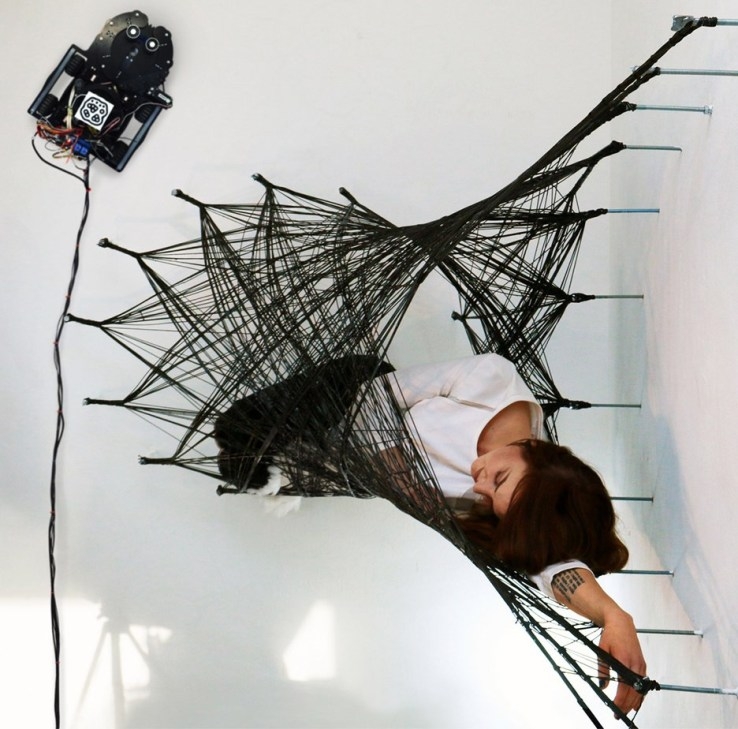The two spider robots secretly woven a "silk hole" on both sides of the wall when you were not at home. At first glance, it was a bit strange, but soon you would feel that it would be nice to have a nap on it. By the way, waiting for Tang Yao. meat. . .

This system is a joint project developed by the Institute of Computer Design (ICD) and the Institute of Building Structure Design (ITKE) at the University of Stuttgart in Germany. The main designer is Maria Yablonina, a graduate student at the university.
These robots are very agile and resemble home sweeping robots that can fit into a suitcase. There is a fan system inside the robot that can generate strong suction so that they can be adsorbed on the surface of any object. Therefore, they can climb up vertical walls or even ceilings very easily. The wall was pre-taped with the reel-shaped piles that were positioned in advance. The two small robots then coiled the carbon fiber material around the reels.

In fact, the two colleges of ICD and ITKE had previously used carbon fiber materials to make many buildings, such as this artistic pavilion, but this was built using large industrial robots.

The design concept behind this new system is not the same. It is "group construction": multiple small robots make an object together. Instead of using one or two large robots. This is similar to the scene in which natural animals such as ants work together.
The small size and flexible mobility of these small workers allow them to work where some industrial robots cannot reach. “We are still at a very early stage in discovering the true architectural potential of this system. But we think that the real advantage of this system is that it can be done with other systems that are not up to the task,†said Achim Menges, Dean of the ICD. “And, Practically speaking, small robots are cheaper and can work together more than once, which is faster than existing manufacturing systems."
The next major task of the research team is to increase the number and range of robots. In the figure we can see that they are linked behind a cable power supply, which limits their movement.
Via DeZeen
network cabinet is widely used for 19 inch network server enclosure perferated cabinet installing and placing of 19" international standard equipment and the system integration. Network Cabinets support large, modular network switches by providing additional space for cable management and side-to-side airflow solutions.
Network Cabinet,Electrical Cabinets,Wall Mount Server Cabinet,Wall Mount Server Cabinet,Wall Mount Cabinets,Electrical Distribution Cabinets
Sijee Optical Communication Technology Co.,Ltd , https://www.sijee-optical.com
